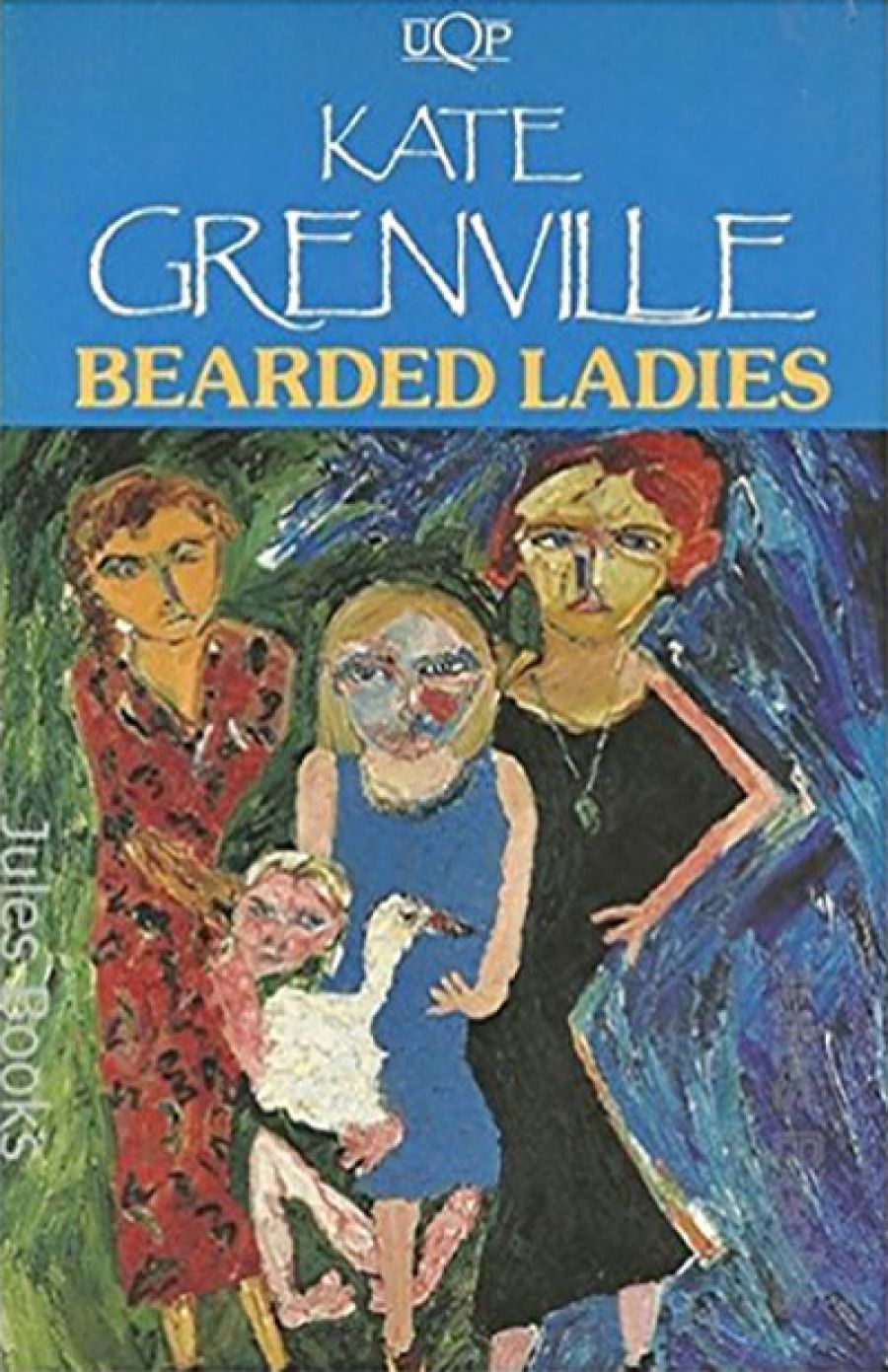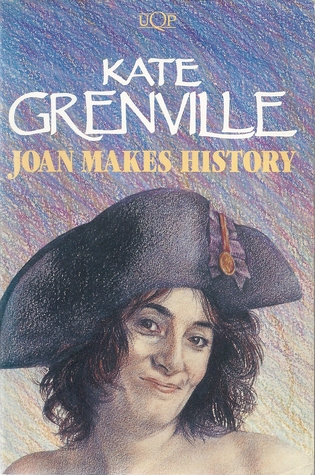
- Free Article: No
- Contents Category: Fiction
- Review Article: Yes
- Online Only: No
- Custom Highlight Text:
Being out of print is like moving back in with your parents – it’s not usually a sign that things are on the up. But fortune’s wheel turns with scant regard for merit or effort, so it must be a relief for writers when their publishers decide to ‘celebrate their continuing contribution to Australian literature’ with a re-release of their back catalogue.
- Book 1 Title: Bearded Ladies/Dreamhouse
- Book 1 Biblio: UQP, $25pb, 352pp,
- Book 1 Readings Link: booktopia.kh4ffx.net/n0Dva
- Book 2 Title: Joan Makes History
- Book 2 Biblio: UQP, $24pb, 279pp
- Book 2 Cover Small (400 x 600):

- Book 2 Cover (800 x 1200):

- Book 2 Cover Path (no longer required): images/1_Meta/Sep_2020/META/12701545.jpg
- Book 2 Readings Link: booktopia.kh4ffx.net/O2GZG
Grenville’s first two books, Bearded Ladies and Dreamhouse, were published in 1983 and 1986 respectively, and her fourth book, Joan Makes History, was commissioned as part of Australia’s bicentennial celebrations in 1988. These new editions are in the same style as UQP’s re-release of Peter Carey’s back catalogue. The titles are in lower case, set below images of landscapes that allude to the physical and emotional territory in the texts. The natural tones of the landscapes are subtly highlighted from cover to spine. The blurb and recommendations are tastefully tucked away on the inside of the foldout front cover, which is a firm card of textured cream.
Whilst the covers have changed, the texts remain the same. Bearded Ladies is an entertaining collection of thirteen short stories, with a circus of characters. Some are openly regarded as oddities, some try to hide their differences, and some expose what the American photographer Diane Arbus has identified as: ‘(the) point between what you want people to know about you and what you can’t help people knowing about you ... the gap between intention and effect.’ As the title promises, we also meet some of Grenville’s ubiquitous witches: old, single women who are the source of fear, intrigue and insight for the children and adolescents in her fiction.
UQP has released Bearded Ladies and Dreamhouse in one volume, reminiscent of a Coles Funny Picture Book – whichever way you turn it, you find yourself at the start of a story. Given that ‘Country Pleasures’, the last story in Bearded Ladies, turns out to be a draft for the first seven chapters of Dreamhouse, this combination has interesting results. It provides an unexpected insight into the reading of a short story as compared to a novel, and an immediate example of the subtle art of editing. But this close comparison also robs Dreamhouse of an absorbing opening. I found myself playing ‘spot the difference’ rather than settling into Grenville’s Tuscan landscape of deception and discovery.
Dreamhouse is the story of Louise, ‘a striking secretary with lovely legs and little future’, and her husband Rennie, ‘a vain man with a thick orange moustache who...was soon to be a professor with an income and a position’. An awkward couple, they have been invited to spend a summer in Italy as guests of Rennie’s mentor, Daniel, ostensibly to afford Rennie time and space to complete his work on ‘Malthus and the Doctrine of Necessary Catastrophe’. In an exotic landscape, under the influence of the enigmatic Daniel and his mysterious adult children, Hugo and Viola, Rennie and Louise undergo a sexual and emotional transformation that sees Louise blossom as Rennie goes to seed.
As evidenced by the opening of Dreamhouse, Grenville likes to wring every bit of juice from her characters. Joan, of Joan Makes History, first appeared in Lilian’s Story and her character was already ‘someone it was easy to write many histories for’. So easy in fact that, when commissioned to write a fictional work to celebrate 200 years of Australian history, Grenville did exactly that. The story of Joan, ‘a woman as plain as a plate ... a grandmother you would pass on the street without a glance’, alternates with, and echoes, the neglected stories of historical Joan, a woman of many guises, from washer woman to traveller to mayoress, who has been ‘cooking, washing and sweeping through every event of history, although she has not been mentioned in the books until now’. Grenville’s Joans are sharp, warm and often amusing companions in this fictional feminist stomp through Australia’s colonial history.
These three books introduced Kate Grenville as a perceptive, individual voice in Australian writing with a fascination for the comedy of manners, the life cycle of madness and the exquisite ordinariness of suffering. UQP are hoping that these new editions will ‘be collector’s items for Kate Grenville fans and for anyone with a love for literature and the beauty of books’. To this rather broad market, I would add that these books make for ideal holiday reading – salty Australian fiction delivered in short bursts that holds its own against sparkling surf, half a fruit cake and a vast blue sky.


Comments powered by CComment